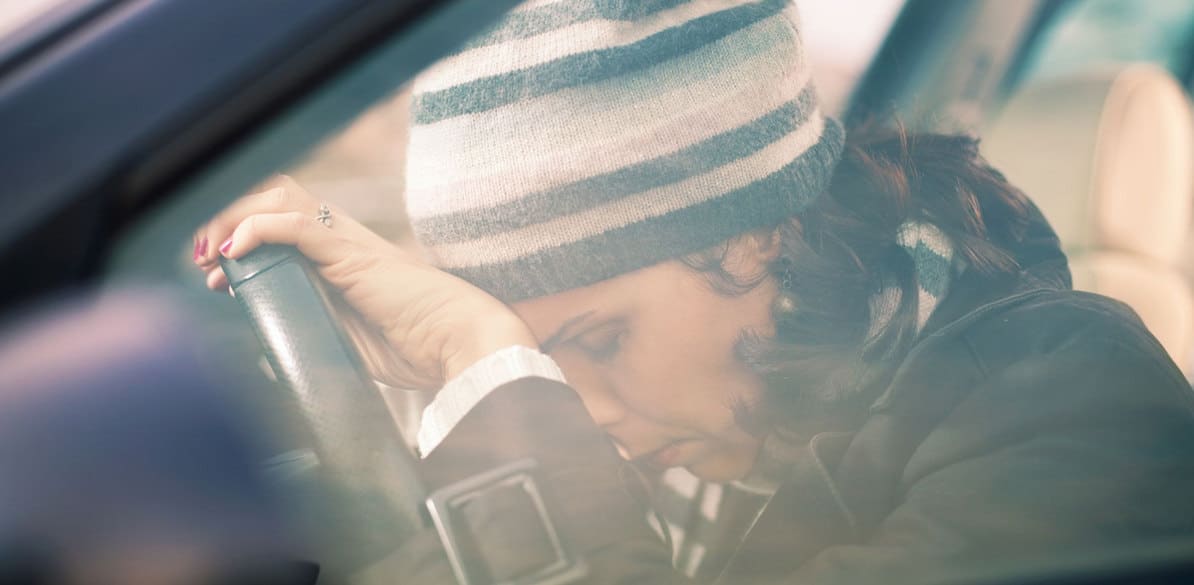Sleep apnea and driving

Sleep apnea syndrome (SAS) is characterized by the presence of recurrent respiratory pauses during sleep, with a duration longer than 10 seconds and at least of 5-10 episodes per hour.
In the respiratory pauses, arterial oxygen saturation decreases over 4% from baseline.
Repeated episodes of sleep apnea leads to wakening that reestablish breathing. The sympathetic system is also activated, that is related to the greater frequency of cardiovascular disease in these patients.
The origin can be central for a reduction in the orders given by the respiratory center, obstructive for blockage of the upper respiratory tract despite the drive for breathing, or mixed. The most common is obstructive SAS.
This disease shows a prevalence of 3-4% in adults and is diagnosed by nocturnal polysomnography.
Obstructive SAS (SAOS) or Pickwick syndrome is often undiagnosed, and must be suspected in any snoring male patient, with sleep fragmentation, significant daytime somnolence, slow reflexes and morning headache.
Memory, attention, and concentration disorders are frequent, with mood and personality changes.
The symptoms increase with alcohol, tranquilizers, and antihistamines before bedtime.
Obesity is the most common predisposing factor, and hypertension, nycturia and cardiac arrhythmia are also frequent. In advanced situations, pulmonary hypertension and cor pulmonale occur.
Microsleeping is a defense of the body not to sleep, and lead to a very short loss of consciousness of the road, signals or other cars.
A high percentage of it is the explanatory cause of those tracks of emergency braking, with diverted trajectory, that are seen in many road sections.
Behavior during driving is impaired in subjects with sleep apnea, who are over 6 times more exposed to traffic accidents that the general population.
Traffic accidents where drivers with sleep apnea are implicated are more serious.
The treatment of obstructive SAS requires the administration of a positive air pressure on continuous basis during sleep hours, with or without oxygen therapy according to the case, and weight loss is mandatory in obese patients.
Associated metabolic diseases such as hypothyroidism, neuromuscular diseases, allergy, and rhinosinusal infection should be treated.
Surgery can be indicated in some anatomic rhinoharyngeal abnormalities.
Multiple studies have shown that patients with SAOS have higher accident rates than the general population.
That there is a clear association between sleep apnea and traffic accidents, that is potentiated by alcohol consumption during the trip.
That there is a clearly increased risk to have accident in drivers with drowsiness.
That regular snorers with normal apnea rates are also at a higher relative risk than non-smokers of suffering an accident.
Therefore, it is suspected that other mechanisms are implicated in addition to the drowsiness caused by awakening from apnea.
Advice on Sleep apnea
- Patients with untreated sleep apnea must not drive.
- Patients with treated SAOS, monitored in subsequent medical examinations, always with a favorable report, can obtain or renew their driving license at the times established by the law.
- Physicians can be very helpful taking interest in this field of medicine, and investigating this possibility in patients visiting our clinic, even if they do it for another reason.
- The typical case is a middle-aged man with overweight, who visits our clinic accompanied by his wife, who complains of his very noisy, intermittent snoring, and about his marked trend to sleepiness at daytime.
- Sometimes, they also complain that they notice that they stop breathing and are frightened upon awakening them.
- In drivers, it should be confirmed if they often suffer daytime drowsiness, if they snore, if they suffer episodes of sleep apnea, and if they have almost get slept while driving or any accident for this.
- We will therefore easily detect any driver with sleep disorders to diagnose and treat him at a Unit of Sleep Disorders and thus prevent them from causing traffic accidents.
- In these patients, sedatives for sleeping and diuretics at the end of the day must be avoided, refrain from taking alcohol, particularly at night, not smoking, avoid abundant dinners, keep a pleasant environment in the bedroom, with no significant temperature changes, try to get up during the weekend at the same time as in the others, use the bed only to sleep and, lie on one side to keep the airways patent.
- If we could report our data and join the effort of all physicians, prospective studies would give a very good result.
